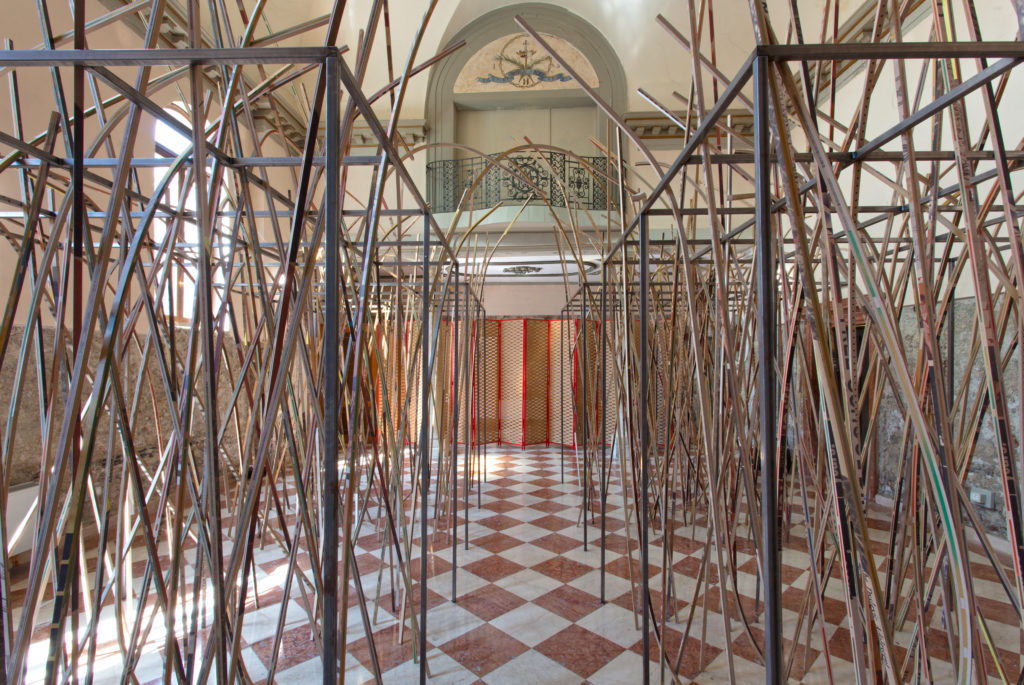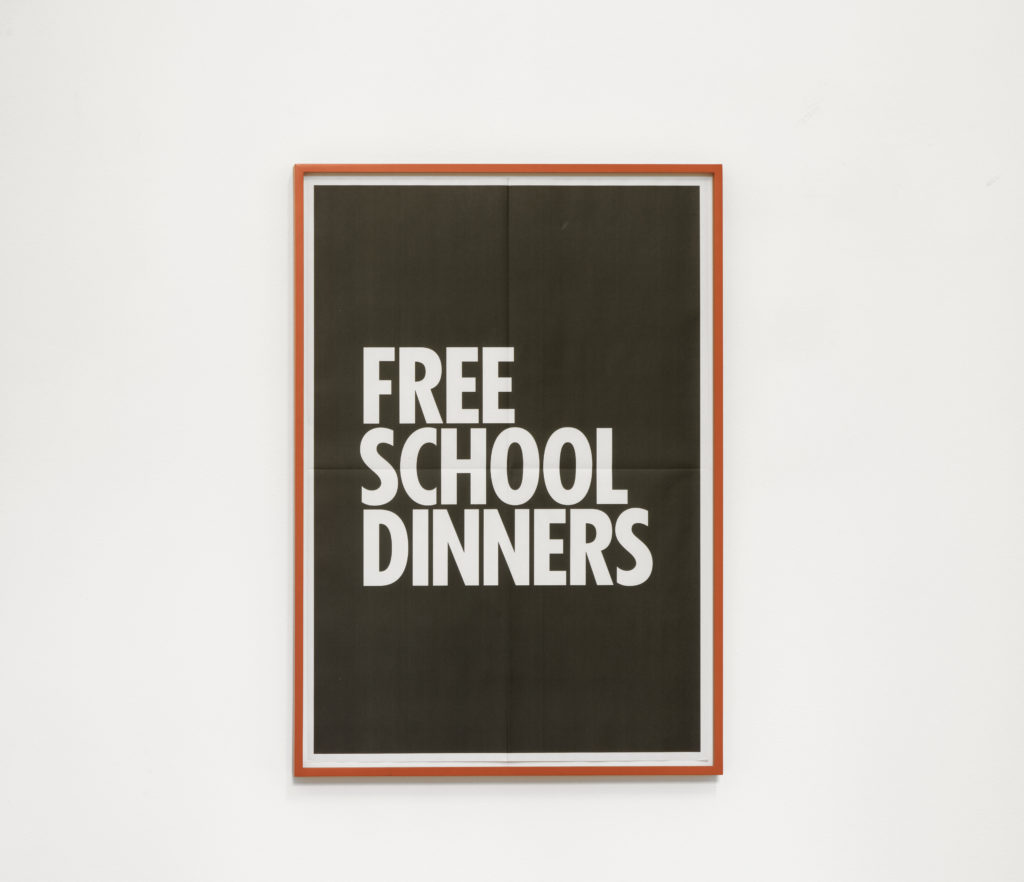Sean Edwards: Undo Things Done
by Anna Searle Jones

Representing Wales in the 2019 Venice Biennale, Sean Edwards’ pavilion exhibition, Undo Things Done, is reflective of his wider practice, weaving a range of mediums—sculpture, photography, film, audio, prints, textiles, artist’s books—into a poetic meditation on working class life, inheritances, and interdependence. These new works draw in particular on the artist’s experience growing up in public housing in Cardiff in the 1980s, recalling an atmosphere he describes as “not expecting much.”
Anna Searle Jones: The venue for Undo Things Done is a former Catholic convent, and many of the works within the exhibition point to other such institutions: the orphanage where your mother was raised, state schooling, and the British media, to name a few. Would it be fair to say that this body of work suggests an ambivalent view of them? The tension between the active and the passive in the title seems to really embody this.
Sean Edwards: Very much so. I think the work came about from wanting to reconcile, or at least consider, some of this ambivalence. When I first began this research, I was reading a lot of [artist] Moyra Davey’s writings, and came upon something she quoted from Fassbinder about putting the “most honest version of yourself” into a show. I knew for this project that I wanted to return to a way of working that centered my biography, similar to my 2010 film, Maelfa, which was shot in a 1970s shopping center near where I grew up.
I initially thought I was going to return to moving image, but trying to create this tension—between the personal and recent history, between different cultural, political, and social implications, all of which are bound up in school, the state, and community—became much more of a challenge with sculpture. How could all this information be packed in, but exist as if on the brink of collapse?
The title, Undo Things Done, came from something my estranged father, who died as I was making this work, once said to me when talking of the past. It originates from bad grammar, yet achieves so much in its brevity. The institutions you mention, many of which are Catholic, were a central part of my formative years, much more than any cultural experience. For quite a while, I had been thinking about the Catholicism at the heart of my childhood, and belief is an inherent part of this show. I think that belief has this active and passive tension inherently within it, and, like the sculpture on view, it teeters on the brink.
ASJ: What does it mean for you to be representing Wales in this particular moment? And, conversely, how has it been to present this work at the Venice Biennale to an art world that has been very slow to acknowledge issues of class and the perspectives of those outside of geographic centers? The show seems quietly subversive in the way that it holds space for—and, in the case of the central work in Undo Things Done, entitled Refrain (2019), explicitly gives voice to—experiences that are not often represented in these circles.
SE: It is a huge honor to be representing Wales, but one that is fraught with complications. I am very aware I am presenting a singular and particular story from Wales. There is a lot of discussion within the United Kingdom at the moment about representing the working-class, particularly within theater and literature, but less so in the visual arts. I wanted to think about what a working-class voice could look like, not just in what it depicts, but how formally it might have an accent, a dialect within materials.
Every day at two in the afternoon my mother performs Refrain, a radio play in three acts that is read live in her apartment in Cardiff and transmitted to the gallery in Venice. I had hoped that this moment of liveness, intimacy, and its small details might create, as you say, space for an actual voice very rarely heard on such a stage. Hers is one shaped by a childhood in care, by moving around, by being a single mother, by struggling financially—by what many people would think of as a hard life. The play moves through impressions of her time in the children’s home and my own recollections of growing up as part of an unemployed, “underclass” family. It also uses found texts—including those by Benjamin on gambling and addiction, Mieke Bal on memory, and extracts of my father’s welfare assessment from shortly before he died.

ASJ: Something that is consistent across all your work is a sense of close looking, of being attuned to the various forces that converge in a given moment. Can you talk about your process of making work and what living in Cardiff affords your practice in terms of this kind of attention?
SE: This idea of close looking, or slow looking, is something that has run throughout my practice. It is funny, at the opening of the Biennale someone asked me about how I started making work. I spoke about the painting I made for my final show as a Foundation student, and I realized, standing there in front of in parallel with the past i-iv (2019), how much the two were intricately bound: the making and formal qualities of that painting and this installation were very much the same. Both are a series of hundreds of small observed moments, abstracted through an ongoing process of “looking.” The same with Maelfa (2010). Both are pieced back together in a way that only functions when the viewer undertakes their own process of close looking.
As for living in Cardiff, it was very much a decision of choosing to live off-center—relative to the geography of the wider UK, which is largely still oriented around London—in an attempt to find a place for slow making and looking. I am equally now trying to think about how to allow this slowness into the work itself. If I am looking for anything, it is an attention focused on the small details.
Sean Edwards: Undo Things Done ran through November 24, 2019.